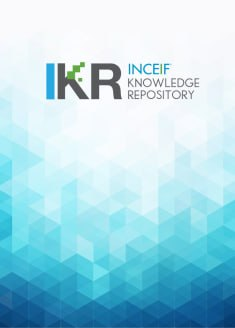
Browse by Author "Azura Othman"
Results Per Page
Sort Options
- PublicationIslamic financial reform and macroeconomc policies: a case of MalaysiaNorhanim Mat Sari; Azura Othman; Syed Othman Alhabshi; Abbas Mirakhor (2015)
Malaysia's overarching economic objective is to achieve developed country status by the year 2020. On the back of sluggish global economic condition and tight fiscal space, the economy will need to grow by a stable and rapid rate over the next few years. Currently, macroeconomic policies in Malaysia follow the conventional model based on the risk-transfer paradigm. Over the next decade, the potential for risk sharing as an alternative to risk transfer is expected to grow rapidly. As pointed out by a number of scholars and researchers, economies can be made more resilient to shocks by adopting financing methods that limit risk transfer (interest rate based debt contracts) and allow greater risk sharing among the market participants on a broad scale. Risk sharing is also the essence of Islamic finance.
- PublicationRisk sharing and public financeAbbas Mirakhor; Azura Othman (Riphah International University, 2014)
Dominant macroeconomic policy regimes are anchored on the interest based debt finance that has created a divergence between the real sector and the financial sector of the economy. Uncertainty has been growing regarding the adequacy of current policy regimes to provide sustainable solutions to contemporary economic problems and challenges, including improvement in the quality of life in addition to the traditional objective of achieving growth with price stability. Policy tools that provide an incentive structure for closing the gap between financial and real sectors of the economy and at the same time enhance social solidarity through the mutual sharing of risks and return could provide more effective means of addressing these challenges. This concept paper offers an alternative policy regime that proposes first, a monetary policy that is targeted directly at asset market activities and private sector portfolio adjustments. Secondly, it suggests mobilization of funds for financing fiscal operations based on risk sharing through sale of government low-denomination equity participation papers directly to the public tradable in secondary markets. The latter proposal is supplemented with a reform of the tax structure. The benefits include better return to savers, improved financial inclusion through broadened public participation, improved governance and positive distributional implications for current and future generations. The objective of these policy reforms is to achieve stability and growth of the real economy, without losing sight of the goal of achieving justice and equity among members of the society.
- PublicationSustainable fiscal position for Malaysia: a proposal for reformAzura Othman (INCEIF, 2017)
Malaysia needs more fiscal space to manoeuver and safeguard growth under current challenging economic condition. The current persistent deficit and high leverage has raised concerns about the sustainability of Malaysia's fiscal position. Amid the above concerns, measures that have been taken by the Government thus far; mainly in the form of subsidy rationalization and the introduction of the Goods and Services Tax (GST); although required, have not been popular among the masses, and ineffective if the Government does not reign in its operating expenditure and borrowing. Increasing borrowing further via bond issuance or long-term government borrowing increases vulnerability, adds interest payment burden on future taxpayers and creates adverse distributional implications.
- PublicationSustainable fiscal position for Malaysia: a proposal for reformAzura Othman; Abbas Mirakhor; Syed Othman Alhabshi (INCEIF, 2015)
Over the past three decades, the Malaysian economy has been experiencing economic growth, but at the same time inundated by a deterioration of overall fiscal balance and consequently a rise in national debt. As a country that has faced persistent fiscal deficits for the last 16 years, Malaysia now needs more fiscal space and a plausible fiscal sustainability plan that would place its economy on a trajectory to a higher growth path. Its budget deficit in 2013 stood at 4% of GDP while federal government debt stands at 53% of GDP ...
Abstract View
2673463
View & Download
195211
